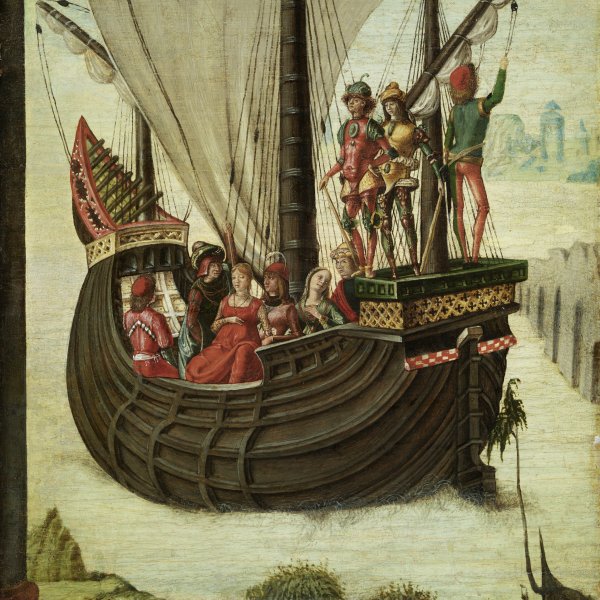Ercole de' Roberti
Ferrara, 1455/56-1496
Ercole de’Roberti was born in Ferrara. Together with Cosmè Tura and his master Francesco del Cossa he was one of the most important artists of the Quattrocento in that city and in Bologna where he also worked. Most of his work has been lost or destroyed and his early years remain difficult to reconstruct, but it is known that in 1473 he was in Bologna in the workshop of Francesco del Cossa.
The attribution of his early paintings is equally controversial and some of them have been given to another painter named Ercole de Grandi. His first known composition as an independent master is the predella for the Griffoni chapel in the church of San Petronio in Bologna, now divided between various museums and private collections. Other early works are the Portrait of Giovanni Bentigovlio and his Wife Ginevra (National Gallery of Art, Washington) and the so-called Pala Portuense (Pinacoteca di Brera, Milan), which is considered one of his masterpieces.
Between 1482 and 1486 the artist was to be found working in Bologna on the decoration of the Garganelli chapel in San Pietro, of which a fragment is now in the Pinacoteca in that city. The monumentality of the figures and approach to composition found in Ercole’s works conform less to that of other northern artists but rather to the Roman school. His work reveals the influence of Andrea Mantegna and although there is no documentary evidence that Ercole travelled to Venice, his style also reveals a knowledge of that of Giovanni Bellini.
Ercole d’Este, Duke of Ferrarra, became the artist’s patron from 1486 onwards and Ercole became official court painter, replacing Cosmè Tura. He retained that position until his death in 1496. During his last years Ercole designed sculpture and buildings, notably the equestrian monument to the Duke in Santa Maria in Vado.
The attribution of his early paintings is equally controversial and some of them have been given to another painter named Ercole de Grandi. His first known composition as an independent master is the predella for the Griffoni chapel in the church of San Petronio in Bologna, now divided between various museums and private collections. Other early works are the Portrait of Giovanni Bentigovlio and his Wife Ginevra (National Gallery of Art, Washington) and the so-called Pala Portuense (Pinacoteca di Brera, Milan), which is considered one of his masterpieces.
Between 1482 and 1486 the artist was to be found working in Bologna on the decoration of the Garganelli chapel in San Pietro, of which a fragment is now in the Pinacoteca in that city. The monumentality of the figures and approach to composition found in Ercole’s works conform less to that of other northern artists but rather to the Roman school. His work reveals the influence of Andrea Mantegna and although there is no documentary evidence that Ercole travelled to Venice, his style also reveals a knowledge of that of Giovanni Bellini.
Ercole d’Este, Duke of Ferrarra, became the artist’s patron from 1486 onwards and Ercole became official court painter, replacing Cosmè Tura. He retained that position until his death in 1496. During his last years Ercole designed sculpture and buildings, notably the equestrian monument to the Duke in Santa Maria in Vado.

